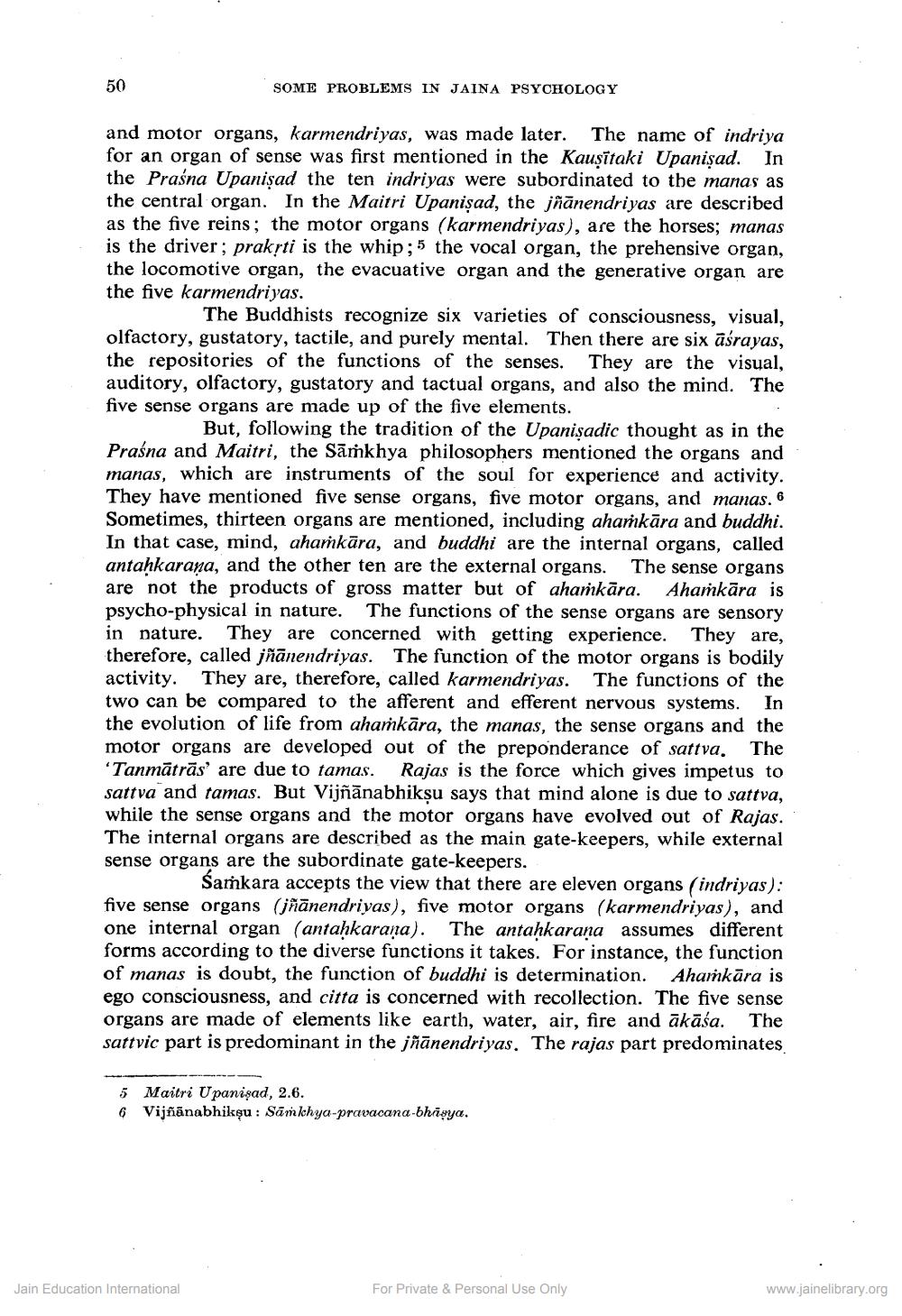________________
50
SOME PROBLEMS IN JAINA PSYCHOLOGY
and motor organs, karmendriyas, was made later. The name of indriya for an organ of sense was first mentioned in the Kausitaki Upanişad. In the Praśna Upanișad the ten indriyas were subordinated to the manas as the central organ. In the Maitri Upanişad, the jñānendriyas are described as the five reins; the motor organs (karmendriyas), are the horses; manas is the driver; prakrti is the whip; 5 the vocal organ, the prehensive organ, the locomotive organ, the evacuative organ and the generative organ are the five karmendriyas.
The Buddhists recognize six varieties of consciousness, visual, olfactory, gustatory, tactile, and purely mental. Then there are six āśrayas, the repositories of the functions of the senses. They are the visual, auditory, olfactory, gustatory and tactual organs, and also the mind. The five sense organs are made up of the five elements.
But, following the tradition of the Upanişadic thought as in the Praśna and Maitri, the Sārkhya philosophers mentioned the organs and manas, which are instruments of the soul for experience and activity. They have mentioned five sense organs, five motor organs, and manas. 6 Sometimes, thirteen organs are mentioned, including aharnkāra and buddhi. In that case, mind, ahamkāra, and buddhi are the internal organs, called antahkarana, and the other ten are the external organs. The sense organs are not the products of gross matter but of ahamkāra. Ahamkāra is psycho-physical in nature. The functions of the sense organs are sensory in nature. They are concerned with getting experience. They are, therefore, called jñānendriyas. The function of the motor organs is bodily activity. They are, therefore, called karmendriyas. The functions of the two can be compared to the afferent and efferent nervous systems. In the evolution of life from ahamkāra, the manas, the sense organs and the motor organs are developed out of the preponderance of sattva. The 'Tanmātrās' are due to tamas. Rajas is the force which gives impetus to sattva and tamas. But Vijñānabhikṣu says that mind alone is due to sattva, while the sense organs and the motor organs have evolved out of Rajas. The internal organs are described as the main gate-keepers, while external sense organs are the subordinate gate-keepers.
Samkara accepts the view that there are eleven organs (indriyas): five sense organs (jñānendriyas), five motor organs (karmendriyas), and one internal organ (antahkarana). The antahkarana assumes different forms according to the diverse functions it takes. For instance, the function of manas is doubt, the function of buddhi is determination. Aharkāra is ego consciousness, and citta is concerned with recollection. The five sense organs are made of elements like earth, water, air, fire and ākāśa. The sattvic part is predominant in the jñānendriyas. The rajas part predominates
5 Maitri Upanisad, 2.6. 6 Vijfilānabhikṣu : Sāmchya-pravacana-bhasya.
Jain Education International
For Private & Personal Use Only
www.jainelibrary.org




